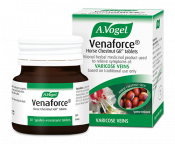An introduction to varicose veins and leg cramp
Aside from the visible symptoms of varicose veins, there are a number of other symptoms that can also be attributed to varicose veins. One of these is leg cramp.
Leg cramp occurs when the muscles in your leg suddenly become tight and painful, and is most commonly experienced in the calf; also where varicose veins are most commonly found. It is commonly experienced during the night and is especially common in women.
One study showed that people suffering from varicose veins have a significantly higher chance of experiencing cramps than those without. 67% of varicose veins patients reported experiencing muscle cramps, compared to 53% of people without. In varicose veins patients, 91% of these cramps occurred in the calf, compared to 75% of those without varicose veins reporting calf cramp.
[Source: Hirai, M, et al., ‘Prevalence and characteristics of muscle cramps in patients with varicose veins’ Vasa, November 2000, 29(4):269-73.]
Why can varicose veins cause leg cramp?
Varicose veins are damaged, swollen, enlarged veins and as a result the valves in these veins often do not work properly, allowing blood to flow backwards in the vein. This results in leakage and pooling of blood that lacks oxygen and is high in toxins.
It is this build-up of deoxygenated, toxin-rich blood in muscles that makes them more prone to cramping.
Self-help tips
There are a number of things you can do to relieve and prevent cramps as a result of varicose veins.
- Exercise is one of the most important self-help methods for preventing and relieving cramps. Exercise such as swimming, cycling or even walking and yoga can help boost circulation, which prevents a build-up of toxins in the leg. Even if you work from a desk all day, try to flex your ankles and legs throughout the day to keep blood moving
- If you tend to get cramp in the same place each time, try stretching that muscle three to four times a day to boost circulation in that area
- During an episode of cramp, try to stretch and massage the affected area. For example, if you are experiencing cramp in your calf, try stretching your leg out and flex at the ankle, pulling your toes towards your shin
- Magnesium is important for muscle function, so make sure you’re eating plenty of magnesium rich foods. These include pumpkin seeds, mackerel, spinach and brown rice. You could also take magnesium supplements if you are struggling to get enough magnesium from your diet, which are available from most supermarkets or health stores
- During or after a cramp, try taking a warm shower or bath to relax the muscle. A heating pad or hot water bottle will have a similar effect. Alternatively, you could try using an ice pack to cool the inflamed muscle.
How can herbal remedies help?
For treating the general symptoms of varicose veins we recommend an extract of Horse Chestnut. This can either be taken internally, through our Venaforce capsules, or rubbed on the affected area using our Venagel. This extract manages the symptoms of varicose veins, such as aching, tired, heavy legs and leg cramps, by boosting blood flow in veins.
Please note: Venaforce capsules are not suitable for pregnant women, but Venagel is safe to use.
In addition, for muscles that are sore and tender after an episode of cramp, arnica gel may be useful. This gel is used not just for bruising but for relief for muscle aches and pains.
Conventional treatment
Simple painkillers such as paracetamol or ibuprofen can relieve the leg pain or muscle ache that follows cramp.
In some cases Quinine may be prescribed to treat severe of persistent leg cramp. However, the drug can cause some unpleasant, serious side-effects, including: tinnitus, headache, nausea, confusion, hot flushes and thrombocytopenia (a condition that can cause nose bleeds, bleeding in the eye or bleeding in the skull and digestive system, which can be fatal). The risk of experiencing these side-effects is low, but GPs will likely only prescribe this drug if leg cramps are particularly severe and are affecting quality of life.
You may be better finding treatment for the root cause of the cramps: the varicose veins themselves. Treatment for this includes compression socks and surgery, which are detailed on our treatment page.








